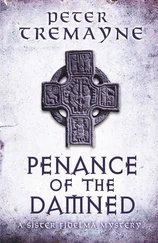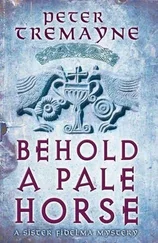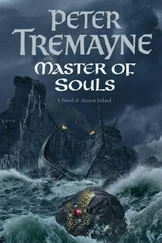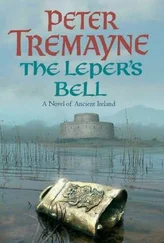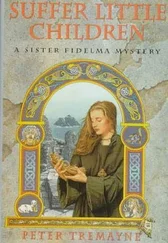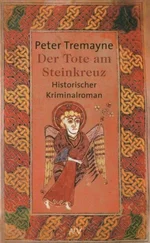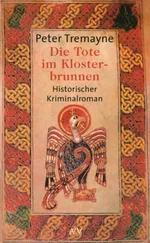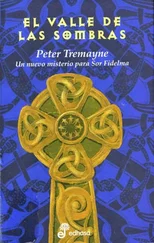Peter Tremayne - Hemlock at Vespers
Здесь есть возможность читать онлайн «Peter Tremayne - Hemlock at Vespers» весь текст электронной книги совершенно бесплатно (целиком полную версию без сокращений). В некоторых случаях можно слушать аудио, скачать через торрент в формате fb2 и присутствует краткое содержание. Жанр: Исторический детектив, на английском языке. Описание произведения, (предисловие) а так же отзывы посетителей доступны на портале библиотеки ЛибКат.
- Название:Hemlock at Vespers
- Автор:
- Жанр:
- Год:неизвестен
- ISBN:нет данных
- Рейтинг книги:4 / 5. Голосов: 1
-
Избранное:Добавить в избранное
- Отзывы:
-
Ваша оценка:
- 80
- 1
- 2
- 3
- 4
- 5
Hemlock at Vespers: краткое содержание, описание и аннотация
Предлагаем к чтению аннотацию, описание, краткое содержание или предисловие (зависит от того, что написал сам автор книги «Hemlock at Vespers»). Если вы не нашли необходимую информацию о книге — напишите в комментариях, мы постараемся отыскать её.
Hemlock at Vespers — читать онлайн бесплатно полную книгу (весь текст) целиком
Ниже представлен текст книги, разбитый по страницам. Система сохранения места последней прочитанной страницы, позволяет с удобством читать онлайн бесплатно книгу «Hemlock at Vespers», без необходимости каждый раз заново искать на чём Вы остановились. Поставьте закладку, и сможете в любой момент перейти на страницу, на которой закончили чтение.
Интервал:
Закладка:
Peter Tremayne
Hemlock at Vespers
INTRODUCTION
The Sister Fidelma mysteries are set during the mid-seventh century A.D. mainly in her native Ireland.
Sister Fidelma is not simply a religieuse, a member of what we now call the Celtic Church whose conflict with Rome on matters of theology and social governance are well known. Apart from differences in rituals, the dating of Easter and the wearing of a dissimilar tonsure, celibacy was not widely practiced and many religious houses contained both sexes who raised their children to the continued service of God. Fidelma is also a qualified dá-laigh, or advocate of the law courts of Ireland, using the ancient Brehon Law system. In those days, in Ireland, a woman could be coequal with men in the professions and many women were lawyers and judges. There is even a record that a female judge, Brig, corrected, on appeal, a judgment given by a male judge, Sencha, on women’s rights.
Those who have followed Sister Fidelma’s adventures in the series of novels might be unaware that she made her debut in short story form. Four different stories featuring Fidelma appeared in separate publications in October 1993. The gratifying response to those stories precipitated Fidelma into the series of novels but also created a demand for even more short stories. The fifteen stories in this volume comprise the complete set of those published at the time of this writing.
To let you into a secret, there might not have been a Fidelma. Under my other hat, as a Celtic scholar, I decided to create the concept of an Irish female religieuse who was a lawyer and solved crimes under the ancient Brehon law system of Ireland, primarily to demonstrate to a wider audience both the fascinating law system and the prominent role that women could and did play in that period. I drafted the first story back in 1993 and named her Sister Buan. It is an ancient Irish name which means “enduring.” Buan occurs in myth as a tutor to the hero Cúchulainn. When I showed the draft story to my good friend Peter Haining, the anthologist and writer, he loved the story but threw up his hands in dismay at the name. He felt the name did not trip easily to the tongue in spite of its shortness.
As I reflected on this, suddenly, Fidelma was born. It was as if she had been waiting to catch my attention. The name is also ancient and means “of the smooth hair.” Once Fidelma “introduced herself” to me, everything fell into place. The name gave her an instant background and a family! The masculine and feminine forms of the name were popular among the royal dynasty of the Eóghanachta who ruled the kingdom of Munster from their capital of Cashel (County Tipperary). And it was an area that I knew very well for my father’s family had been settled sixty kilometers from Cashel for seven hundred years, so the records show. Cashel was always a special place-of magic, mystery, and history, for me. Fidelma immediately identified herself as the daughter of the Cashel King Failbe Fland who died circa AD. 637/ 639 within months of Fidelma being born. So before she became a religieuse and a lawyer, Fidelma was raised as an Eóghanachta princess.
Sharp-eyed readers will have realized that there is a strict chronology followed in the books. The stories have so far taken place between the spring of A.D. 664 and autumn of A.D. 666. In fact, A.D. 666 was a rather busy year for Fidelma as it was the setting for four book-length mystery adventures occurring between January and October.
That adherence to a set chronology also applies to the short stories. Fidelma appears in the first stories around the age of twenty-seven having trained not only at an Irish ecclesiastic center but having studied at the secular college of the Brehon (Judge) Morann at Tara. (There was a real Brehon Morann whose dictums still survive in ancient Irish literature.) Fidelma achieved her qualifications in law to the level of anruth, one degree below the highest that the ecclesiastical and secular colleges could bestow. While she was a student, she had an unhappy affaire de coeur with a warrior who was not her intellectual equal. She then joined the community which had been founded by St. Brigid at Kildare. While here, she started to achieve a reputation by solving difficult legal mysteries and her talents as a lawyer, a dálaigh in Old Irish, became much in demand.
Readers may be surprised that Brother Eadulf plays no part in any of the short stories. In the first novel, Absolution By Murder, Fidelma, already with a reputation as an incisive inquirer and legal expert, was sent to advise the Irish delegation at the Synod of Whitby in A.D. 664. This Synod was the location of the famous historical debate between representatives of the Celtic and the Roman Church. It was there that Fidelma met the young Saxon monk named Brother Eadulf. He had been trained in Ireland but now wore the tonsure of Rome. He became her “Doctor Watson” and has featured in every novel except one- Suffer Little Children.
In the following stories, Fidelma herself solves the mysteries without Eadulf’s good intentioned but often critical assistance. This is partially because several of the stories are set prior to Fidelma’s meeting with Eadulf. Stories such as “Murder in Repose” and “Murder by Miracle” are two of Fidelma’s early cases. Other early adventures are “Tarnished Halo,” “Abbey Sinister,” and “Our Lady of Death.” For the very sharp-eyed, a chronological pattern can also be followed in these stories. Yet each story is complete and does not necessarily have to be read in a chronological method.
In the early stories, Fidelma announces herself as Fidelma of Kildare. A reader once wrote and asked me why she decided to leave that community. (After the events of Suffer Little Children she takes on the mantle of Fidelma of Cashel.) The reason why she began her break with Kildare is explained in “Hemlock at Vespers.” At that point, Fidelma set off to discuss her problems with her mentor, the chubby-faced and kindly Abbot Laisran of the great abbey of Durrow where, in the mid-seventh century, young men and women from no less than eighteen nations are recorded as students. “A Canticle for Wulfstan” is located at Durrow. While there, Fidelma receives a cry for help from a close friend of her childhood, a girl she has grown up with, who has been accused of murdering her husband and her own child. The resultant adventure is told in “At the Tent of Holofernes.” On her continued journey to the High King’s court at Tara, she finds that the Yellow Plague, which devastated much of Europe at this time, had been instrumental in causing the death of the joint High Kings, Diarmuid and Blathmac. The new High King, Sechnasach, is about to be installed but part of the ceremonial regalia has gone missing. Civil war and anarchy could result if Sechnasach cannot prove his right to the kingship by showing the sacred artifacts. The mystery is recounted in “The High King’s Sword.”
From there, Fidelma is off to Whitby to attend the Synod, as previously mentioned. From Whitby she travels to Rome with a party which includes Brother Eadulf. In the autumn of that year, the newly appointed Archbishop of Canterbury is found murdered in the papal palace-an actual historical event-and Fidelma and Eadulf join forces again to solve the mystery in Shroud for the Archbishop. The short story “The Poisoned Chalice” is also set in Rome in this same period but, again, Eadulf is not in attendance. Fidelma and Eadulf part company in Rome; Fidelma to return home while Eadulf is to instruct the new archbishop of Canterbury, Theodore of Tarsus, before accompanying him to England to assume his duties. Fidelma makes her journey home via the Abbey of Nivelles, an Irish foundation in the forest of Seneffe, in what is now Belgium, where “Holy Blood” takes place.
Читать дальшеИнтервал:
Закладка:
Похожие книги на «Hemlock at Vespers»
Представляем Вашему вниманию похожие книги на «Hemlock at Vespers» списком для выбора. Мы отобрали схожую по названию и смыслу литературу в надежде предоставить читателям больше вариантов отыскать новые, интересные, ещё непрочитанные произведения.
Обсуждение, отзывы о книге «Hemlock at Vespers» и просто собственные мнения читателей. Оставьте ваши комментарии, напишите, что Вы думаете о произведении, его смысле или главных героях. Укажите что конкретно понравилось, а что нет, и почему Вы так считаете.

